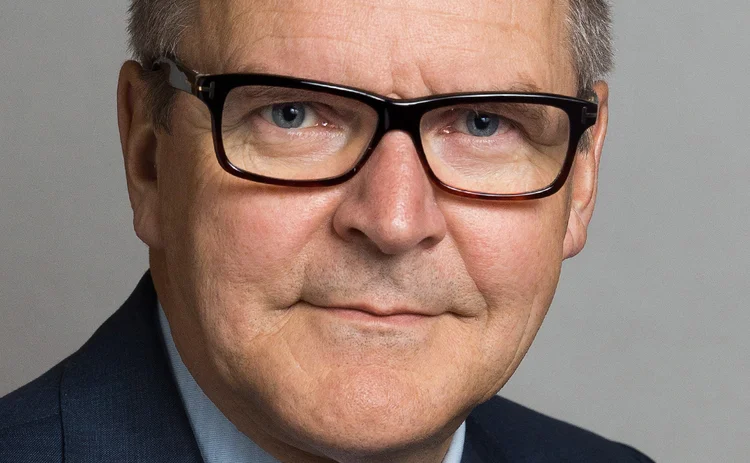
Reserve manager of the year: National Bank of Denmark
New risk-based approach stood up to its first major test

On January 15, 2015, foreign exchange markets were in turmoil. A surprise decision by the Swiss National Bank to scrap its three-year-old cap on the value of the Swiss franc to the euro sent the Swiss currency soaring and saw speculators test the resilience of other fixed exchange rate systems around the world.
The Danish krone, which is pegged to the euro, faced one of the sternest tests. Large portfolio flows into the country prompted National Bank of Denmark governor Lars Rohde to slash the benchmark monetary policy interest rate – on certificates of deposit – four times in 18 days to –0.75%. Government debt issuance was temporarily cancelled at the request of the central bank and a limit on current account deposits for monetary policy counterparties was introduced. Rohde declared the central bank would defend the krone's peg to the euro "for as long as it takes", selling kroner in "larger amounts than ever before" in Denmark's history.
Funds worth approximately €37 billion ($40 billion), or around 15% of GDP, poured into Denmark in a little more than a month as hedge funds took speculative positions against the peg and (as it later emerged) domestic pension funds and insurance companies rushed to hedge their foreign exchange positions. The influx of money represented the first test of National Bank of Denmark's new reserves management strategy, which was then stressed once more when the central bank faced a significant flow of funds in the opposite direction from March, with euro sales totalling around €37 billion, as the central bank successfully defended the peg and speculators retreated.
"As a test of our framework it was a good experience, as even though these were extraordinarily large amounts, the framework was robust enough to handle them and accommodate the situation," says Morten Kjærgaard, head of risk management and strategy for banking and markets at National Bank of Denmark.
 Morten Kjærgaard, National Bank of Denmark
Morten Kjærgaard, National Bank of Denmark
Overhaul of the central bank's reserves asset management framework has been a work in progress for a number of years. But the appointment in 2013 of Rohde, a former head of ATP, one of Europe's largest pension funds with assets of around 700 billion kroner ($100 billion), as governor facilitated the transformation of its strategic asset allocation process. Meanwhile, foreign exchange reserves had swollen to exceed 700 billion kroner in the first half of 2015 (at the end of the year the figure was closer to 435 billion kroner) versus less than 150 billion kroner in 2008. While the central bank's funding rate (monetary policy rate) currently is lower than the rate earned on reserves and its risk tolerance is not defined by the size of the balance sheet but rather the size of the central bank's net capital, getting its strategy right in this area is of growing importance.
Liquidity requirements
Significant effort went into quantifying the needs required to meet core policy objectives. These objectives are: maintaining the krone's peg to the euro (a fixed rate with the euro/Deutschmark has been in place for 30 years and remains the primary objective of the central bank), meeting International Monetary Fund commitments (maximum further loan and purchase commitments are 108 billion kroner), and supporting banking sector stability.
During the financial crisis the Danish central bank experienced its largest-ever outflows while the Swiss National Bank's decision to abandon its cap to the euro in 2015 resulted in record inflows. The central bank's staff then quantified the amount of reserves required to meet each policy objective and translated these quantities into a 'term structure of liquidity requirement'. This means National Bank of Denmark calculates how much would be required, for example in T+0, T+2, T+7 across its core objectives in specific currencies, and then ensures it holds sufficient amounts of liquid assets to meet these needs.
"It was a difficult exercise, but a very important one," Kjærgaard says.
For example, a lot of effort was put into establishing the specific drawdown time frames should Denmark have to meet its IMF commitments. It was not only important to work out the size of potential commitments, but also to understand how the drawdown processes would work in reality, with particular focus placed on notification times.
"We are looking specifically at the exact obligations that would need to be met by our liquidity buffer," Kjærgaard says.
'Making money'
Once these basic liquidity requirements have been established with the relevant liquid funds set aside, the reserves management team then looks at how to deploy surplus funds to "make some money within the risk budget", according to Kjærgaard. Rather than assessing each asset class individually as was the case previously, the National Bank of Denmark assesses investments using a holistic portfolio approach. As a result, instead of deeming equities or corporate bonds as too risky on a standalone basis due to their higher levels of volatility versus, for example, US government securities, their risk and return characteristics are assessed from the perspective of the entire portfolio. "It is possible to increase the spectrum of return without compromising too much on the risk," says Kjærgaard.
National Bank of Denmark now uses an internally built portfolio optimisation model developed in MatLab to provide the main inputs into its strategic asset allocation policy. Expected shortfall measures were introduced to better account for tail risk (large, rare events), including the whole balance sheet in the computation. Expected shortfall to net capital is now a key steering parameter. The Danish central bank is also agnostic regarding how it gains exposures, being equally comfortable holding futures, total return swaps and exchange-traded funds in addition to standard cash instruments.
As a result, the central bank now holds investment-grade corporate bond ETFs, equities through instruments tracking the S&P 500 and Euro Stoxx 50 indexes, as well as lower investment-grade sovereign debt. In the past, the central bank also invested in high-yield bonds but exited the market due to a compression in spreads making the investments uneconomic. "I am impressed with the way the National Bank of Denmark has diversified its assets into new asset classes at a time when bond returns are historically low and interest rate risk arguably high," says Jarno Ilves, head of investments at Bank of Finland.
Kjærgaard says a central tenet of the new strategic asset allocation policy, which was independently reviewed by the Bank for International Settlements, is that it requires a longer-term outlook where short-term, mark-to-market losses will be more frequent than in the past. "They are doing the right things, and are showing the way for tomorrow's central bank asset management," Ilves adds.
The reserves framework faced another major test during August when, spooked by a sharp fall in Chinese equity prices and a possible slowdown in the Chinese economy, investors shied away from risky assets. For example, the Euro Stoxx 50 fell 15.5% between August 10 and 24. But the National Bank of Denmark remained committed to its new strategy. "The reaction was really good," says Kjærgaard, who adds that some parts of the portfolio, including fixed income and gold, performed well during the period. "You need a framework and a clear understanding and common acceptance that we're in it for at least the medium term because that's how we structured the portfolios," he says. "If there is a risk of shutting it down whenever you have the first loss, then you should just buy short-term German government securities. There was no discussion whatsoever to shut it down."
Towards the end of 2015, the pressure on the krone normalised, with the Ministry of Finance resuming government bond issues in October. Its new reserves policy means the National Bank of Denmark is well placed to manage its enlarged pool of forex reserves, while also meeting its primary mandate.
The Central Banking awards were written by Christopher Jeffery, Tristan Carlyle, Daniel Hinge, Arvid Ahlund, Dan Hardie and Rachael King.
Only users who have a paid subscription or are part of a corporate subscription are able to print or copy content.
To access these options, along with all other subscription benefits, please contact info@centralbanking.com or view our subscription options here: http://subscriptions.centralbanking.com/subscribe
You are currently unable to print this content. Please contact info@centralbanking.com to find out more.
You are currently unable to copy this content. Please contact info@centralbanking.com to find out more.
Copyright Infopro Digital Limited. All rights reserved.
As outlined in our terms and conditions, https://www.infopro-digital.com/terms-and-conditions/subscriptions/ (point 2.4), printing is limited to a single copy.
If you would like to purchase additional rights please email info@centralbanking.com
Copyright Infopro Digital Limited. All rights reserved.
You may share this content using our article tools. As outlined in our terms and conditions, https://www.infopro-digital.com/terms-and-conditions/subscriptions/ (clause 2.4), an Authorised User may only make one copy of the materials for their own personal use. You must also comply with the restrictions in clause 2.5.
If you would like to purchase additional rights please email info@centralbanking.com







